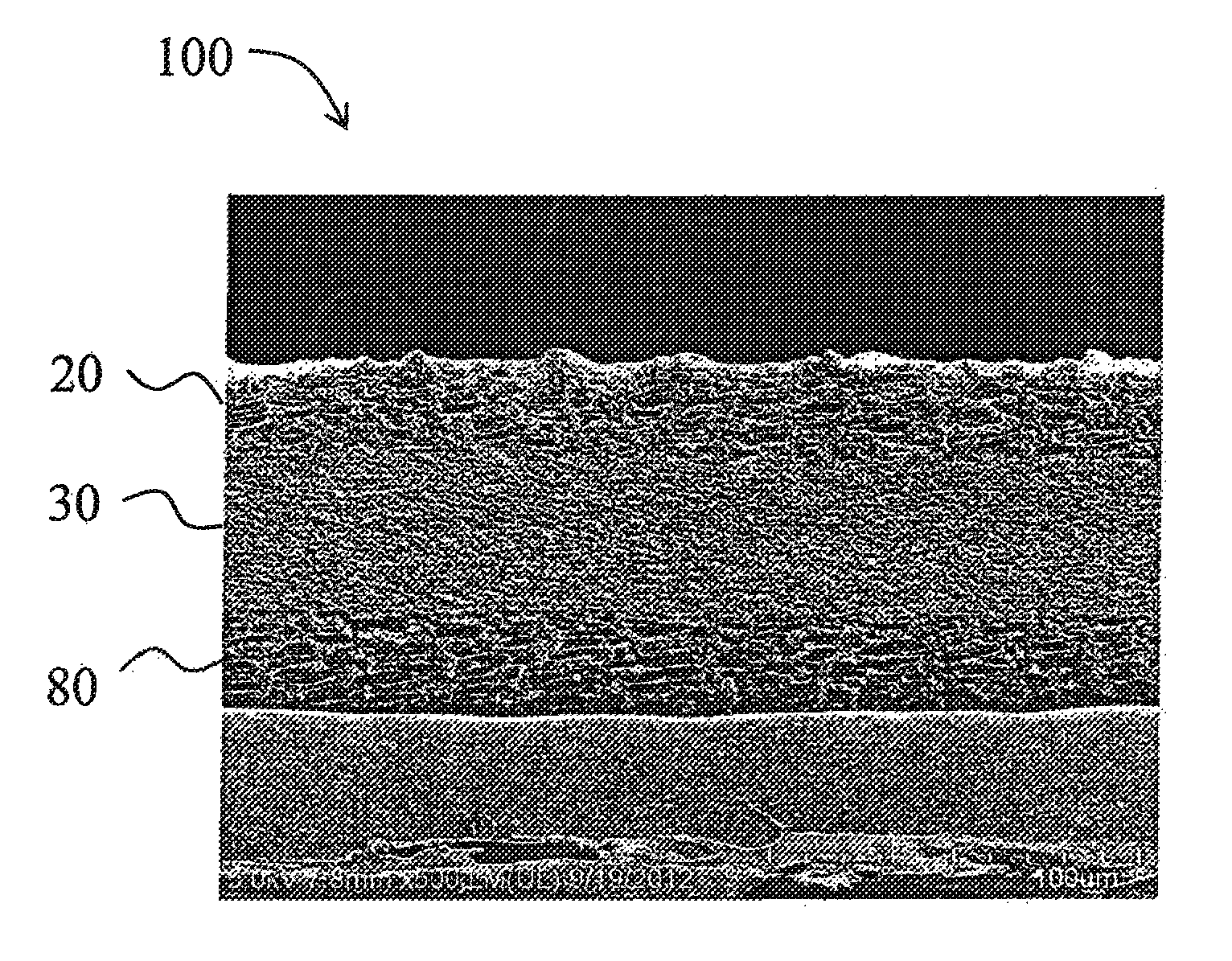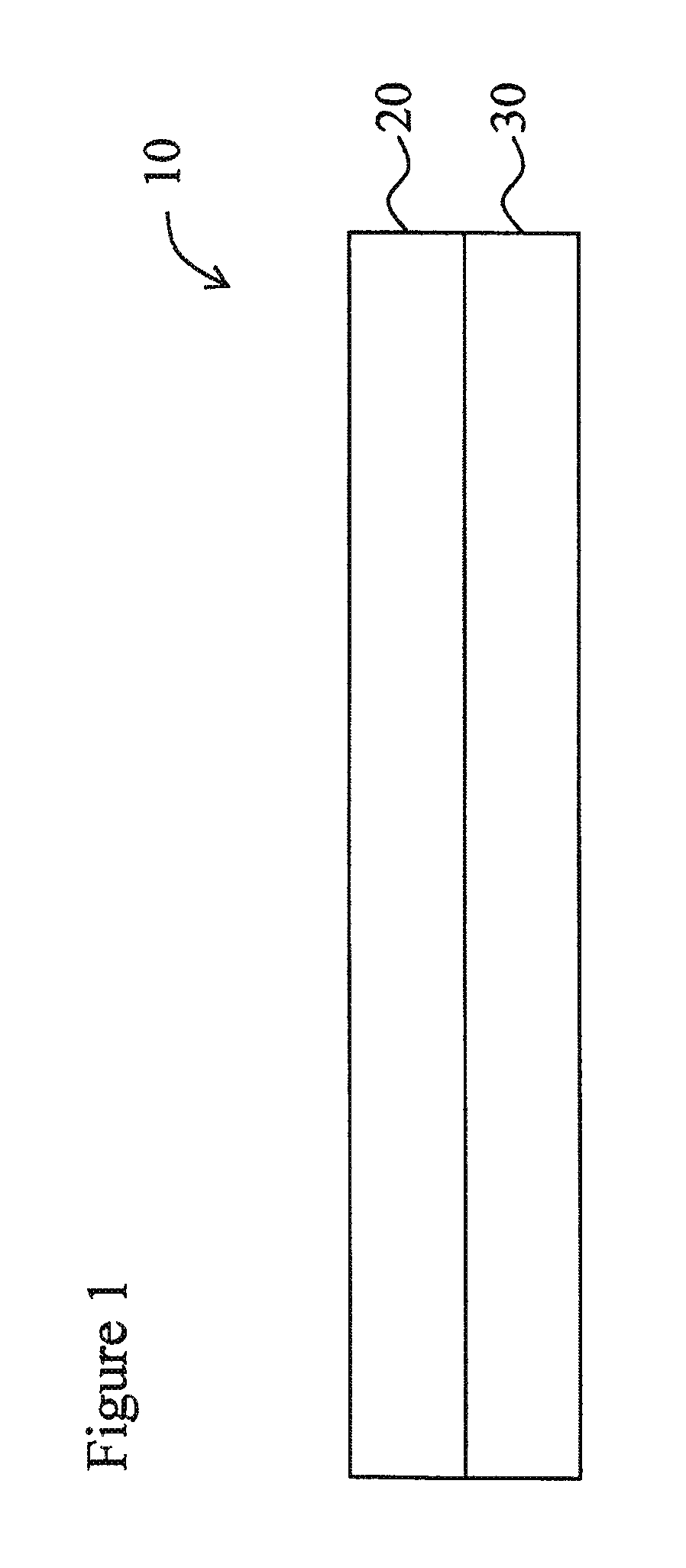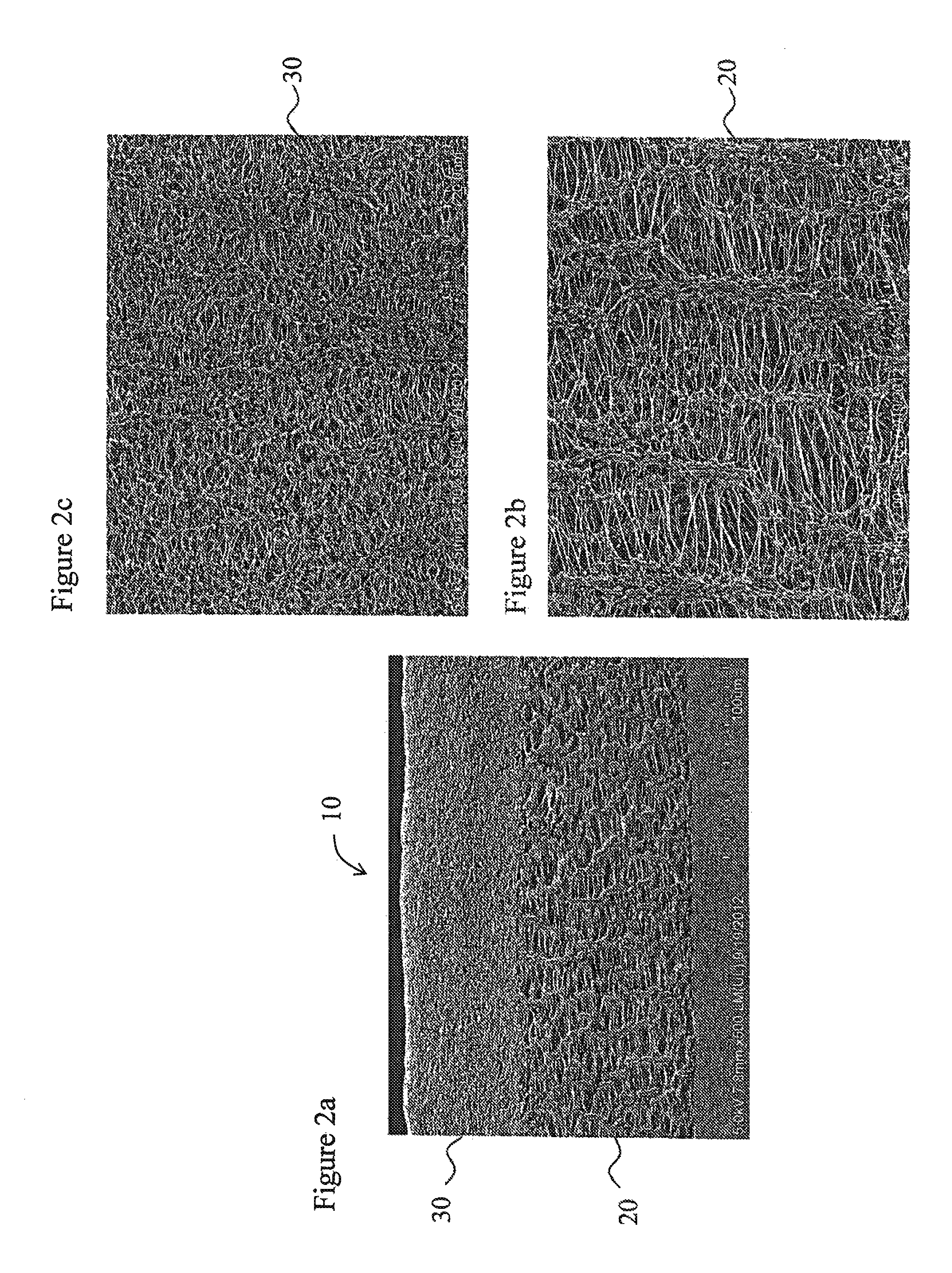Low gloss, air permeable, abrasion resistant, printable laminate containing an asymmetric membrane and articles made therefrom
a technology of air permeable laminates and asymmetric membranes, applied in the direction of synthetic resin layered products, transportation and packaging, chemistry apparatus and processes, etc., can solve the problems of unsatisfactory weight of an article, materials with a higher water pickup on the outer surfac,
- Summary
- Abstract
- Description
- Claims
- Application Information
AI Technical Summary
Benefits of technology
Problems solved by technology
Method used
Image
Examples
example 1
[0098]A two-layer membrane was made from two different PTFE tapes in the following manner. Fine powder of PTFE polymer (PTFE 605XT X, E.I. DuPont deNemours, Wilmington, Del.) was blended with Isopar K (Exxon Mobil Corp., Fairfax, Va.) in the proportion of 0.235 g / g of fine powder. The lubricated powder was compressed in a cylinder to form a pellet and placed into an oven set at 49° C. for approximately 8 hours. The compressed and heated pellet was ram extruded to produce an extrudate tape approximately 15 cm wide by 0.75 mm thick. Hereafter, this tape is referred to as Tape 1.
[0099]Another fine powder was used to create a second tape, referred to herein as Tape 2. The tape was made the same manner as Tape 1 with the following exceptions. A PTFE polymer (Teflon PTFE 601A, E.I. DuPont deNemours, Wilmington, Del.) was used and the ratio of lubricant to fine powder was 0.218 g / g.
[0100]Tape 1 and Tape 2 were calendered together between compression rolls set to a temperature of 38° C., us...
example 2
[0103]A textile laminate was made from the membrane of Example 1 and a knit textile in the following manner. A length of 27 g / m2 warp knit textile fabric was obtained (Style #A1484 Poly Knit from Glen Raven, Inc. located in Glen Raven, N.C., USA). A discontinuous adhesive dot lamination process was used to combine the membrane and knit textile. A low surface energy ink was then printed onto the membrane side of this textile laminate utilizing a gravure process.
[0104]The test results obtained for the ink-printed textile laminate are set forth in Table 2.
example 3
[0105]A three-layer membrane was made as follows. A layer of Tape 2 as described in Example 1 was placed between one layer each of Tape 1 as described in Example 1. The three tapes were individually calendered between compression rolls, wherein the compression rolls were set to a temperature of 38° C. and a gap of 0.42 mm. The three tapes were next calendered together between compression rolls, wherein the compression rolls were set to a temperature of 38° C. and a gap of 0.61 mm.
[0106]The three-layer calendered tape was then transversely stretched at a ratio of approximately 3:1 and subsequently dried in an oven set at 250° C. The resulting dry tape was longitudinally expanded at a ratio of about 1.9:1 at a temperature of approximately 300° C. The longitudinally expanded tape was then transversely expanded at a temperature of approximately 250° C. at a ratio of approximately 6:1 and then restrained from shrinking and heated in an oven set at approximately 375° C. for about 15 secon...
PUM
| Property | Measurement | Unit |
|---|---|---|
| gloss | aaaaa | aaaaa |
| gloss | aaaaa | aaaaa |
| mean diameter | aaaaa | aaaaa |
Abstract
Description
Claims
Application Information
 Login to View More
Login to View More - R&D
- Intellectual Property
- Life Sciences
- Materials
- Tech Scout
- Unparalleled Data Quality
- Higher Quality Content
- 60% Fewer Hallucinations
Browse by: Latest US Patents, China's latest patents, Technical Efficacy Thesaurus, Application Domain, Technology Topic, Popular Technical Reports.
© 2025 PatSnap. All rights reserved.Legal|Privacy policy|Modern Slavery Act Transparency Statement|Sitemap|About US| Contact US: help@patsnap.com



